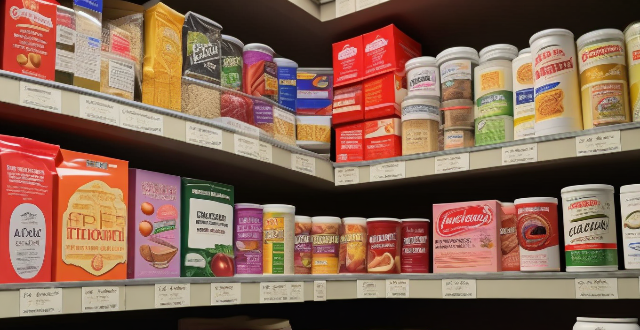Food packaging plays a crucial role in maintaining the safety, quality, and shelf life of food products. It serves as a protective barrier against various external factors that could contaminate or spoil the food inside. Packaging helps protect food from microbial, chemical, and physical contamination, preserves its quality by preventing spoilage and preserving freshness, extends shelf life through methods like Modified Atmosphere Packaging (MAP) and vacuum packaging, provides essential information through labels, and offers convenience and hygiene benefits. Overall, food packaging significantly contributes to overall food safety and public health.

The Role of Food Packaging in Ensuring Overall Food Safety
Food packaging plays a crucial role in maintaining the safety, quality, and shelf life of food products. It serves as a protective barrier against various external factors that could contaminate or spoil the food inside. In this response, we will explore the different ways food packaging contributes to overall food safety.
Protection from Contamination
Food packaging helps protect food from microbial, chemical, and physical contamination:
- Microbial Contamination: Proper packaging prevents the entry of bacteria, viruses, and fungi that could make food unsafe to consume.
- Chemical Contamination: It acts as a barrier against harmful chemicals such as pesticides, cleaning agents, and industrial pollutants.
- Physical Contamination: Packaging prevents food from coming into contact with potentially harmful objects or substances like glass fragments, metal shavings, or dirt.
Preservation of Quality
Food packaging helps maintain the quality of food by preventing spoilage and preserving its freshness:
- Oxygen Barrier: Many packaging materials are designed to limit oxygen exposure, which slows down oxidation processes that can lead to rancidity in fats and discoloration in fruits and vegetables.
- Moisture Control: Some packages are engineered to absorb excess moisture or release moisture as needed to prevent drying out or spoilage due to condensation.
Shelf Life Extension
Packaging extends the shelf life of food products by controlling the environment around them:
- Modified Atmosphere Packaging (MAP): This type of packaging alters the gaseous environment inside the package to extend shelf life without using preservatives.
- Vacuum Packaging: Removing air from the package reduces oxidation and inhibits the growth of aerobic bacteria and molds.
Information Labeling
Labels on food packaging provide essential information for consumers to make informed decisions about their food choices:
- Ingredients: Lists all components, including potential allergens.
- Nutritional Information: Details about calories, fats, proteins, carbohydrates, vitamins, minerals, etc.
- Expiration Dates: Helps consumers know when the product is no longer safe to eat.
- Storage Instructions: Advises on how to store the product to maintain its safety and quality.
Convenience and Hygiene
Packaging also offers convenience and ensures hygiene during handling and storage:
- Resealable Packaging: Allows consumers to easily open and close the package, keeping the remaining contents fresh and clean.
- Individually Wrapped Portions: Minimizes cross-contamination and makes it easy to carry snacks or meals on the go.
In conclusion, food packaging is an integral part of our modern food supply chain. It not only protects food from various types of contamination but also preserves its quality, extends shelf life, provides important information to consumers, and offers convenience and hygiene benefits. By doing so, it significantly contributes to overall food safety and public health.